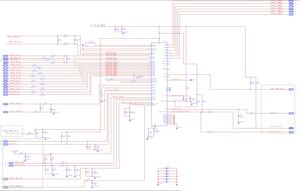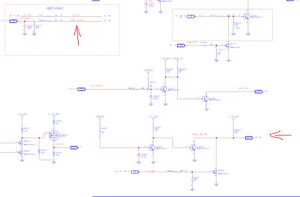More actions
Here you'll find information about Vcore on Polaris GPUs and its potential problems.
| VCore Rail on Polaris GPUs Explained | |
|---|---|
| Type | |
| Device(s) | |
| Difficulty | |
The Controller Circuit
Depending on the card, VCore is controlled by either IR3567B (does not have full datasheet available but this one is close enough), NCP81022, or UP9505P.
Note that all of these controllers have firmware on them, you cannot simply just replace it with a new one if it dies, you either need to flash it yourself or get it from a donor card.
VDDCI is also created on the VCore controller If the card is using an NCP81022 or UP9505P.
-Schematic is only available for IR3567B variant-



Markings on the schematic and board could differ from GPU model to another but the circuit is almost always the same.
Depending on the controller, VCC is provided by either 3.3V rail or 5V rail.
POK from this controller is not used to enable anything else.
Usage
The PWM signals generated by the controller regulates the voltage going to power the GPU core. Switching 12V to 0.7V to 1V depending on the load on the GPU.
Common Problems
No VCore Voltage
In this case, check if the controller has 5V or 3.3V on its VCC, and 3V on EN. If one of them is missing trace their respective circuits and check for broken, knocked off, or defective components
If both are present but no output, you could ask the controller directly for its status via I2C protocol if the controller does not respond that means it is likely dead and needs to be replaced.
Short on VCore
By design, VCore has low resistance to GND (less than 1 Ω), so using a low-end multimeter won't be able to measure it accurately. Often times, the short happens on one of the VRMs. How to find them is explained here Base Voltage Rail Short on Polaris GPUs.
